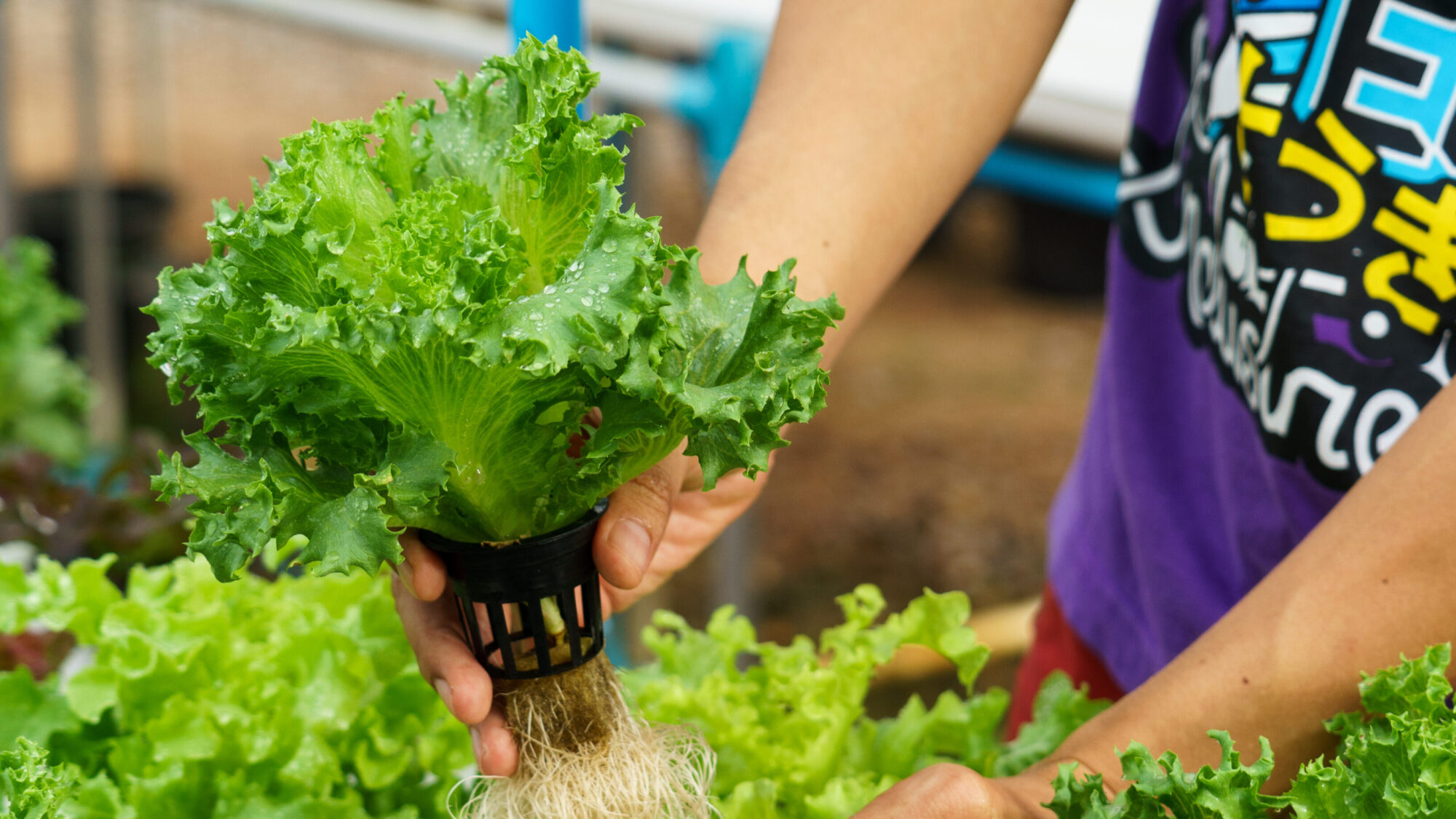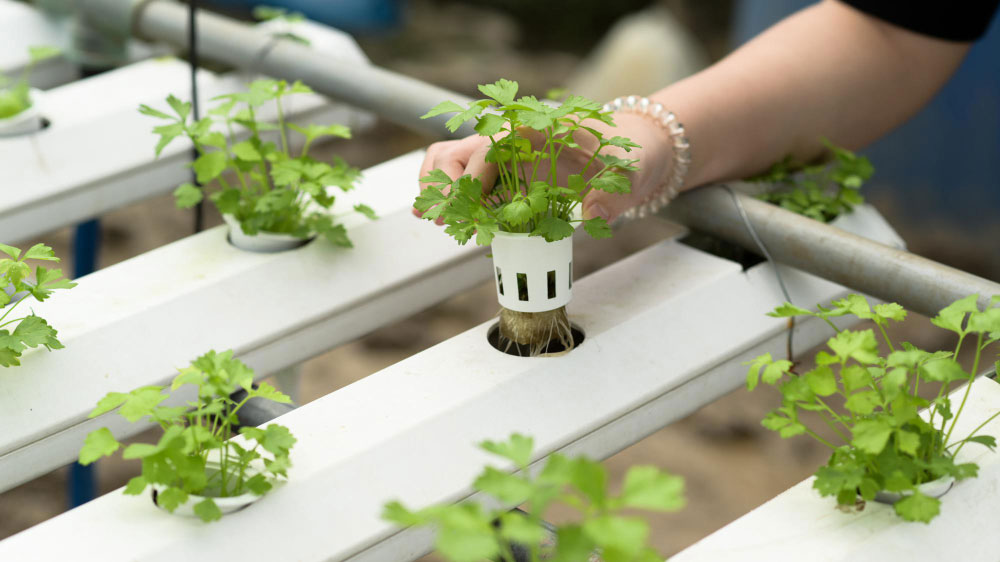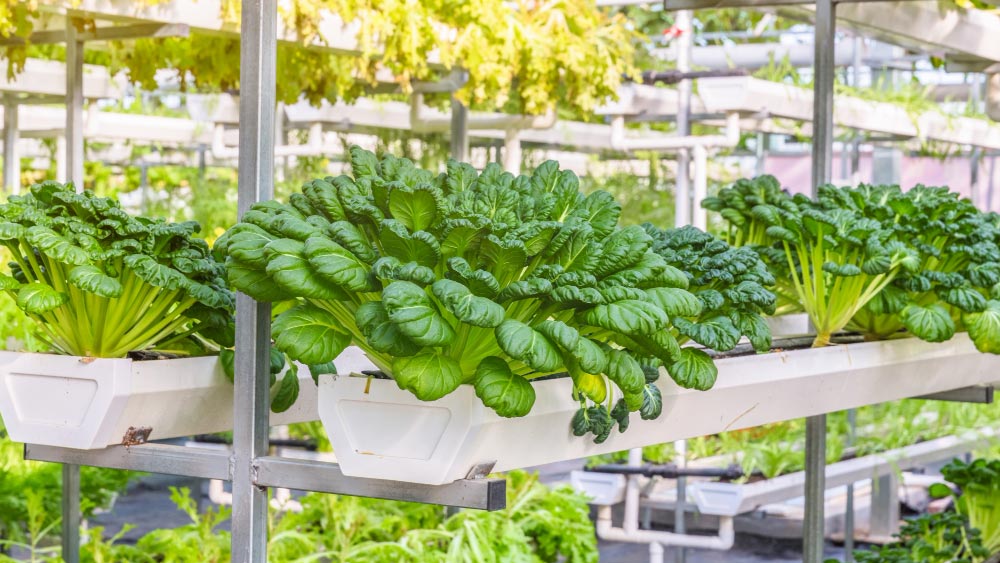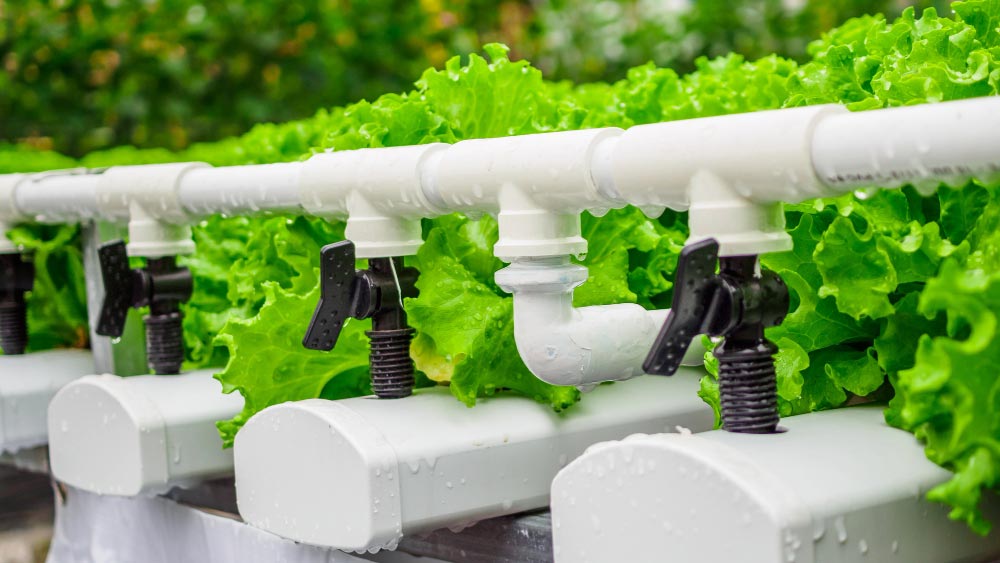Herbs For Hydroponics: The Ultimate Guide to Growing Herbs
This guide offers you the perfect gateway to mastering the art of growing herbs hydroponically. It combines technology with traditional gardening to create healthy, productive herb gardens. In this article, we will explore everything from the basics of hydroponic gardening to the specific equipment needed.
As well as providing valuable insights for both experienced gardeners and newcomers, it covers various hydroponic systems and their benefits, helping you revolutionize your gardening experience and create a thriving herb garden.

What is Hydroponic Gardening?
Hydroponic gardening is a revolutionary method of growing plants without soil. This technique uses nutrient-rich water solutions to nourish plants, allowing them to grow faster and healthier than in traditional soil-based environments.
The roots of the plants are submerged in or exposed to this nutrient solution, providing all the necessary elements for growth. As these nutrients are readily available, roots do not need to waste as much energy on development. The result is more energy going into producing foliage or flowers.
The system offers precise control over nutrients and environmental conditions, leading to higher yields.
Benefits of Growing Herbs Hydroponically
Growing herbs hydroponically offers the following benefits:
- Increased Growth Rate: Hydroponic systems provide herbs with direct access to nutrients, enhancing their growth rate compared to soil-based gardening.
- Water Efficiency: These systems use water more efficiently. The closed system recycles water, reducing overall usage.
- Space Optimization: Hydroponics is perfect for small or urban spaces. It allows vertical growth, maximizing space use.
- Year-Round Cultivation: A controlled environment enables growing herbs regardless of the season.
- Reduced Pests and Diseases: Without soil, the risk of soil-borne pests and diseases significantly drops.
Better Quality and Taste: Herbs grown hydroponically often have enhanced flavors and higher nutritional content due to controlled nutrient management.

Herbs For Hydroponics: Plant Selection for a Hydroponic Herb Garden
Selecting the right herbs, understanding their unique requirements and matching them to nutrient requirements will lead to a successful and rewarding hydroponic herb garden.
Choosing the Right Herbs For Hydroponics
Consider growth patterns and environmental needs when selecting plants for a hydroponic herb garden. Ideal candidates are herbs that thrive in consistent moisture and nutrient-rich conditions.
- Basil: One of the most popular herbs to grow in hydroponics, thriving in any hydroponic system and requiring water, nutrients, warmth, and plenty of sunlight or grow lights. Read more about how to grow hydroponic basil.
- Thyme: Known for its aromatic flavor, thyme is a common herb grown hydroponically and is suitable for various hydroponic systems.
- Mint: A generous and potent herb that grows fast and is almost disease-free, making it well-suited for hydroponic cultivation.
- Parsley: This vibrant green herb is a common ingredient in many dishes worldwide and is well-suited for hydroponic growth, requiring natural light and a pH level of around 6.0.
- Oregano: This herb needs a higher pH and is suitable for hydroponic cultivation, adding flavor to various dishes.
- Chives: Known for their mild onion flavor, chives are suitable for hydroponic systems and can be grown alongside other herbs.
- Rosemary: While it can be a bit challenging, hydroponically grown rosemary offers a fresh, aromatic addition to various dishes and is suitable for specific hydroponic systems.
- Sage: With its soft, fragrant leaves and slightly peppery flavor, sage is a beautiful herb to grow in a hydroponic system, adding a robust flavor to dishes.
- Lavender: Known for its fragrant and versatile uses, lavender can be grown hydroponically, providing a unique addition to the herb garden.
- Marjoram: This herb is suitable for hydroponic cultivation and offers a mild, sweet flavor to dishes.
Considerations for Growth
Evaluate light, temperature, and space requirements. Herbs like cilantro need cooler temperatures, while others, such as rosemary, prefer more warmth and light. Therefore, it is advisable to group herbs together with similar requirements and consider the size the herb will grow to and the size of its leaves to avoid casting shade over neighboring plants.
The ideal spot for a hydroponic herb garden indoors is generally in front of a sunny windowsill, but using grow lights allows for flexibility in choosing other locations.
Nutritional Needs
Different herbs require varying nutrient levels. Research each herb’s specific needs to ensure optimal growth and flavor.
Let’s make your life easy. I have found Voodoo Juice can extensively enhance the plant’s growth.
You can also try B-52! It’s not the bomber, but it bombards your tiny plants with nutrients.
Different herbs require varying nutrient levels, and various commercial solutions are available that all contain essential nutrients and are suitable for home growers. Listed here are some of the more popular options:
- General Hydroponic Flora Gro: This nutrient solution is recommended for beginners and is ideal for stimulating growth in herbs. It provides the essential nutrients needed for herb cultivation without promoting excessive blooming, which can make herbs bitter.
- Maxigrow/Maxibloom: This is a popular choice among hydroponic growers and is known for its ease of use. It comes in a powder form, making it convenient for measuring and mixing, and is suitable for various herbs such as basil and mint.
- Fox Farm Liquid Trio Formula: This is specifically formulated to meet each stage of growth.
Homemade Nutrient Solution: For those who prefer to make their nutrient solution, a standard recipe includes a mixture of potassium phosphate, potassium nitrate, calcium nitrate, and magnesium sulphate dissolved in warm water. This homemade solution can be an effective option for hydroponic herb gardens. However, making your own solution will take more experience and a greater understanding of growing needs and nutritional requirements at each stage of development.
How To Build Hydroponic System For Herbs
Building a hydroponic system requires careful planning and attention to detail but can yield abundant, flavorful herbs.
Selecting the Right Hydroponic System
First, choose a system that suits your space and skill level. Options include
- Deep Water Culture (DWC)
- Nutrient Film Technique (NFT)
- Wick systems
Gathering Essential Components
You’ll need a reservoir, growing trays, a submersible pump (for specific systems), air stones, and tubing.
Setting Up the System
Place the reservoir, connect pumps and air stones, and set up growing trays. Ensure all components are securely connected and leak-proof.
Adding Grow Medium and Herbs
Select a suitable grow medium like Rockwool or clay pellets. Plant your herb seeds or cuttings in the medium.
Nutrient Solution and pH Balancing
Mix a nutrient solution following package instructions. Regularly check and adjust the pH level for optimal herb growth. Check out our review on the most effective pH meters.
Lighting and Environment
Install grow lights suitable for herbs, ensuring they receive adequate light. Maintain a consistent temperature ideal for your chosen herbs.

Types of Hydroponic Systems
Hydroponic systems offer several benefits and can be customized to suit different herb varieties and gardening preferences.
Nutrient Film Technique (NFT)
The Nutrient Film Technique is a popular hydroponic system. It involves a continuous nutrient solution flow over plant roots in a shallow stream.
This method ensures that plants receive an adequate supply of nutrients and oxygen. NFT systems are ideal for herbs with smaller root systems and are widely used due to their efficiency and simplicity.
Deep Water Culture (DWC)
Deep Water Culture immerses plant roots in a nutrient-rich solution. This system typically uses a floating platform to hold plants above the key.
Air pumps supply oxygen to the roots, promoting vigorous growth. DWC is renowned for its simplicity and effectiveness, especially for beginners.
Wick System
The Wick System is one of the simplest hydroponic methods. It uses a wick to draw nutrient solution from a reservoir to the plant roots.
This passive system requires no pumps, making it low-maintenance and cost-effective, though it’s best suited for smaller herb gardens.
Ebb and Flow System
An Ebb and Flow System, also known as flood and drain, periodically floods the root zone with nutrient solution and drains it back into the reservoir.
This process ensures that roots get ample nutrients and air. The system’s timing can be adjusted, offering flexibility to suit various herb types.
Aeroponics System
Aeroponics involves misting plant roots with a nutrient solution. The roots hang in the air, receiving nutrients and oxygen directly.
This advanced system is highly efficient, promoting rapid growth and high yields. Aeroponics requires precise control but offers excellent results for dedicated gardeners.

Best Hydroponic System for Growing Herbs
There are various commercial systems available. The Click & Grow Smart Garden is a hydroponic system specially designed for growing a variety of herbs and is known for its effectiveness in cultivating successful yields.
Additionally, the Wick System is also suitable for growing herbs hydroponically indoors, as it efficiently delivers water and nutrients to the plants via a small drip line that goes directly to the roots, making it a very efficient method.
Regarding off-the-shelf hydroponic systems, the Aerogarden and the iDOO 8 Pods Hydroponic Growing System are popular choices for growing herbs, with the Aerogarden being a classic and standard choice in the USA.
Hydroponic Equipment Needed for Herbal Gardening
The following specialist equipment is crucial for successful hydroponic growing: grow lights, air stones, timers, air pumps, nutrient solution, pH meter and test strips.
Lighting Requirements for Herbs in a Hydroponic Garden
Herbs require sufficient lighting for photosynthesis and growth. Grow lights, mainly LED, provide the necessary light spectrum and intensity for hydroponic gardens. They are energy-efficient and can be adjusted based on the growth stage of the herbs.
But how much light is needed for hydroponic herbs?
Most herbs require at least 6 hours of direct sunlight or 12-16 hours of artificial light per day for optimal growth in a hydroponic system. The light needed varies depending on the herb variety and growth stage.
It is essential to keep the herbs no more than 12 inches away from the light source, as light intensity decreases the further away it is from the source.
Air Stones, Air Pumps, and Timers
Air stones and air pumps are essential for aerating the nutrient solution, ensuring the plant roots receive enough oxygen. Timers help automate the nutrient delivery and lighting schedules, making the hydroponic system more efficient and easier to manage.
pH Meter and Test Strips
Maintaining the correct pH level in the nutrient solution is crucial for nutrient absorption. pH meters and test strips help monitor and adjust pH levels, ensuring the herbs can absorb the necessary nutrients effectively.
Final Words
Hydroponic gardening offers a sustainable and efficient way to grow herbs and other vegetables like spinach, tomatoes indoors. With knowledge, equipment, and plant selection, anyone can set up a thriving hydroponic garden.
Embrace the future of gardening and enjoy the bounty of fresh, aromatic herbs and vegetables all year round.

